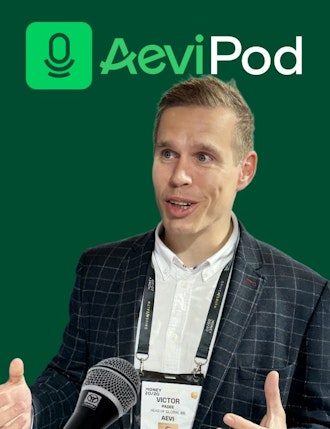The Power 50 x Aevi: The power of in-person payment orchestration
At Money20/20 Europe, Victor Padee shared explains why in-person payment orchestration is essential in today’s global commerce. He highlights the shift from rigid, one-size-fits-all systems toward flexible, API-based infrastructure. Unlike online orchestration, in-person orchestration must overcome legacy hardware, regional certification challenges, and fragmented integration landscapes.
Aevi steps in to unify this complexity, enabling businesses to scale across countries, manage diverse terminals, and deliver true omnichannel strategies. Rather than competing, Aevi empowers partners to deliver what their clients actually need.
Transcript Highlights
Tom: For those who aren’t familiar with Aevi, can you give us a quick overview of the company and what makes it unique?
Victor: Absolutely. Aevi is a payments orchestration company focused specifically on in‑person payments. You’ve probably heard of payment orchestration for online channels, but we specialize in bringing that same flexibility and scalability to physical retail, hospitality, and other environments where cards and devices interact face‑to‑face.
Tom: Why is in‑person payment orchestration becoming such a critical part of the payments stack?
Victor: Great question. When I started in payments 20 years ago, the norm was one terminal, one acquirer, little innovation. Today, businesses operate globally, use multiple hardware vendors, digital wallets, and cross‑border acquiring partners. That complexity demands a flexible orchestration layer. Without it, companies can’t scale, can’t innovate quickly, and they lose out on efficiency and customer experience.
Tom: How does in‑person payment orchestration differ from what we see online?
Victor: Online orchestration is typically API‑first and cloud‑native. In‑person involves legacy hardware, certifications per region, and proprietary rails. Rolling out a new device or acquirer in one country doesn’t automatically work everywhere. We break down those walls, unifying devices, integrations, and certification processes so partners and merchants can innovate rapidly.
Tom: What challenges do businesses face when trying to unify in‑person payments across providers or geographies?
Victor: It’s a spaghetti of devices, acquirers, and rails. One large client of ours processes over a billion transactions across ten countries, with 26 different POS integrations and multiple fuel‑card schemes. Managing all those relationships and certifications independently is a full‑time job. Our platform centralizes everything, relationships, integrations, reporting, so they can add new partners or regions without reworking their stack.
Tom: How does this orchestration help them execute an omnichannel strategy?
Victor: A true omnichannel strategy starts with unified systems and data. If you have ten back‑office systems, you get ten reconciliation processes and ten customer views. With orchestration, all transactions feed through one platform, giving a single, coherent view of customer behavior, online, in‑store, mobile, and enabling seamless experiences and reporting.
Tom: Looking ahead, what trends are shaping the future of in‑person payment orchestration, and how should businesses prepare?
Victor: We see several key trends: the rise of SoftPOS, unattended payments (like parking and EV charging), and a shift toward best‑of‑breed partnerships rather than one‑stop shops. Businesses should architect for flexibility, partner with specialist providers and plug them into an orchestration layer, rather than building everything in‑house. That approach future‑proofs your payments stack and keeps you close to emerging technology.











